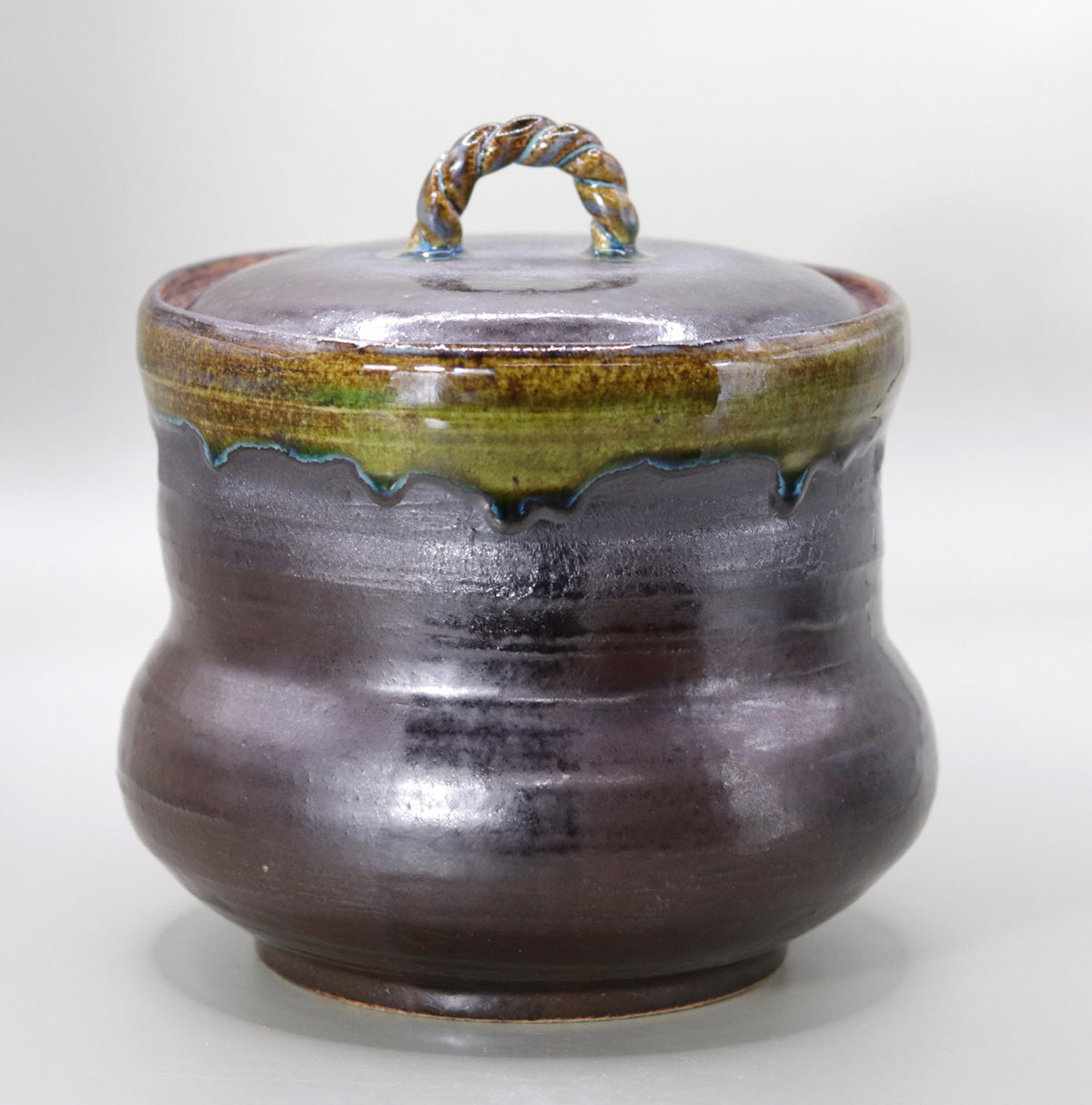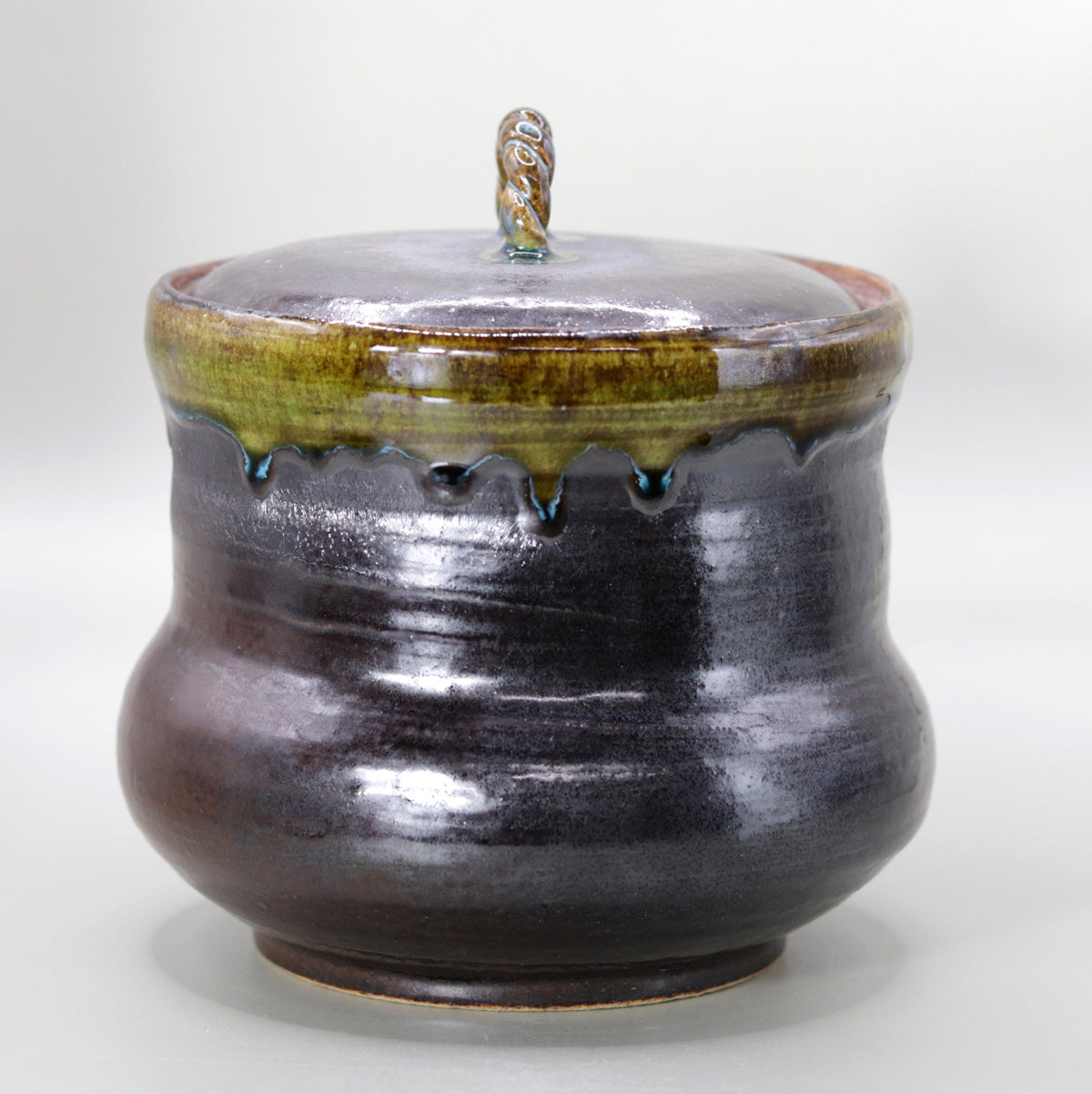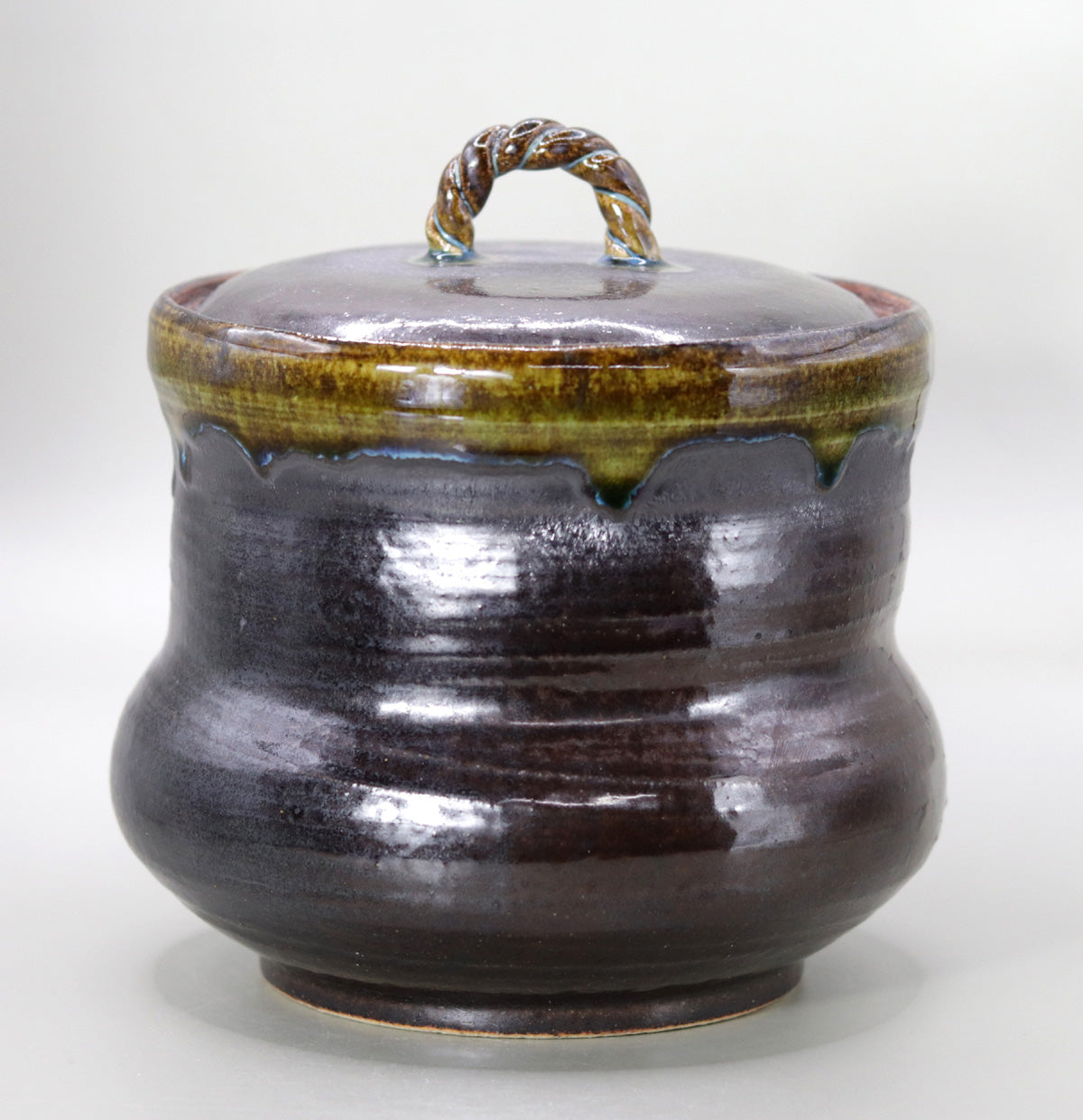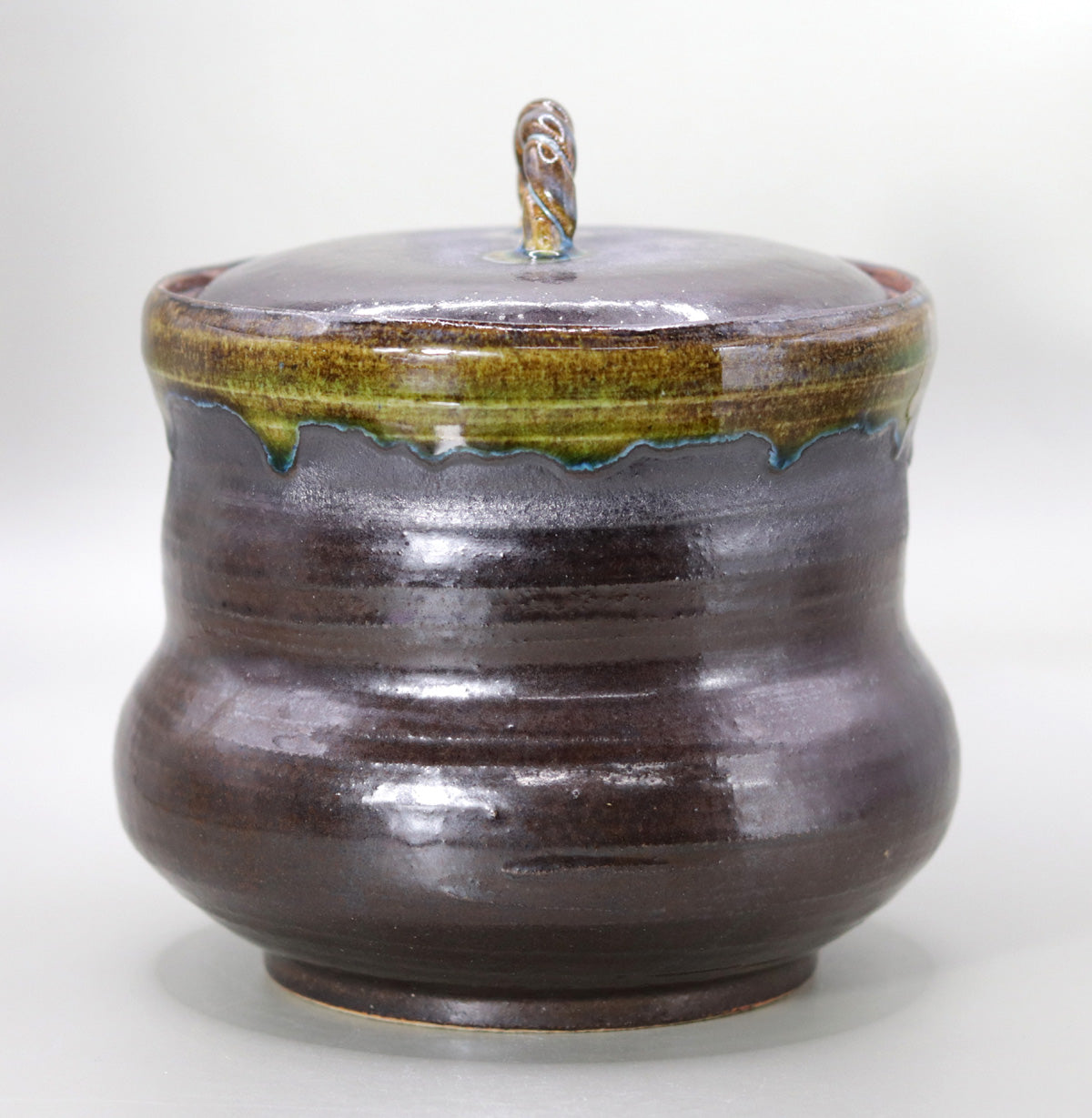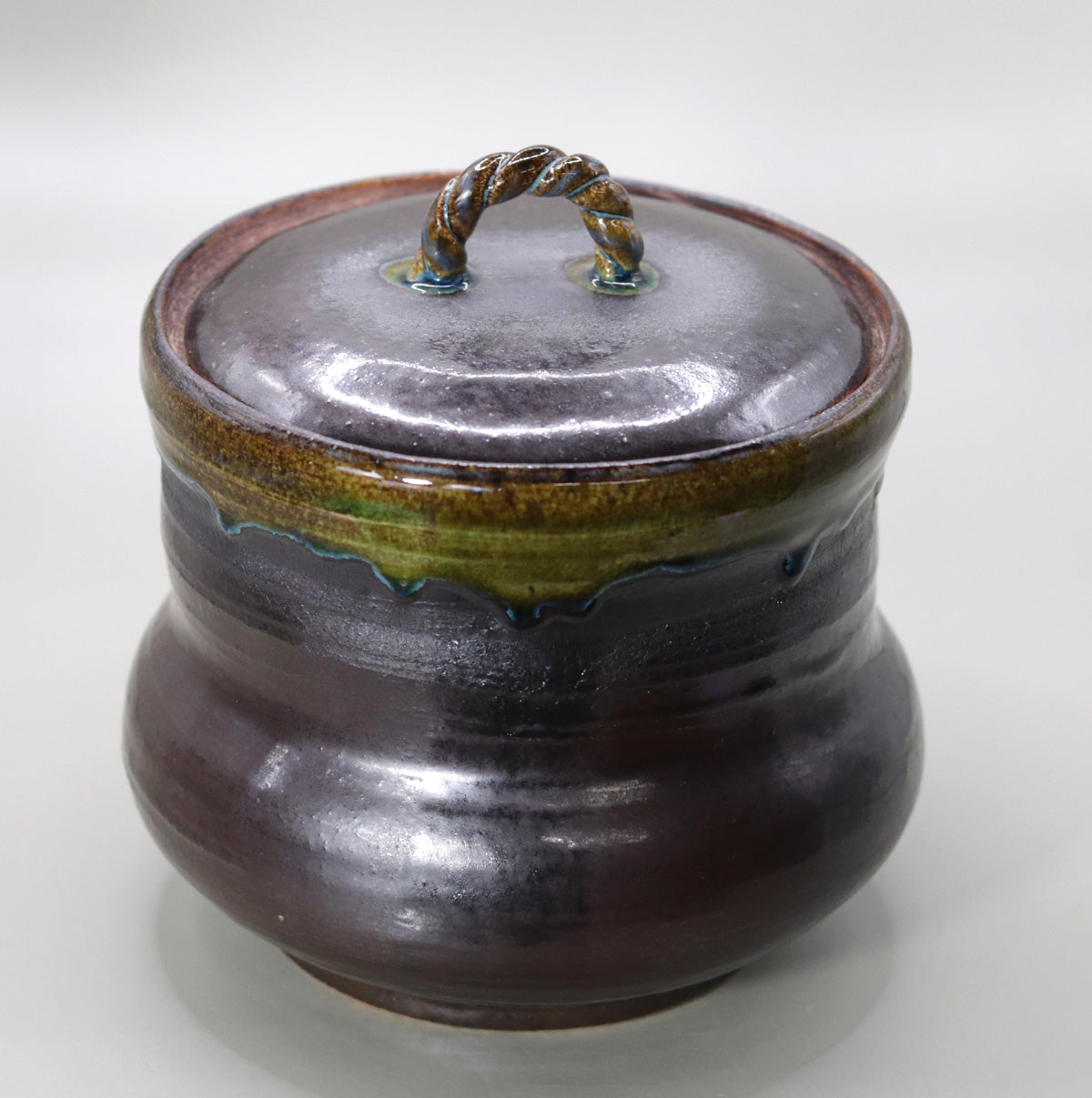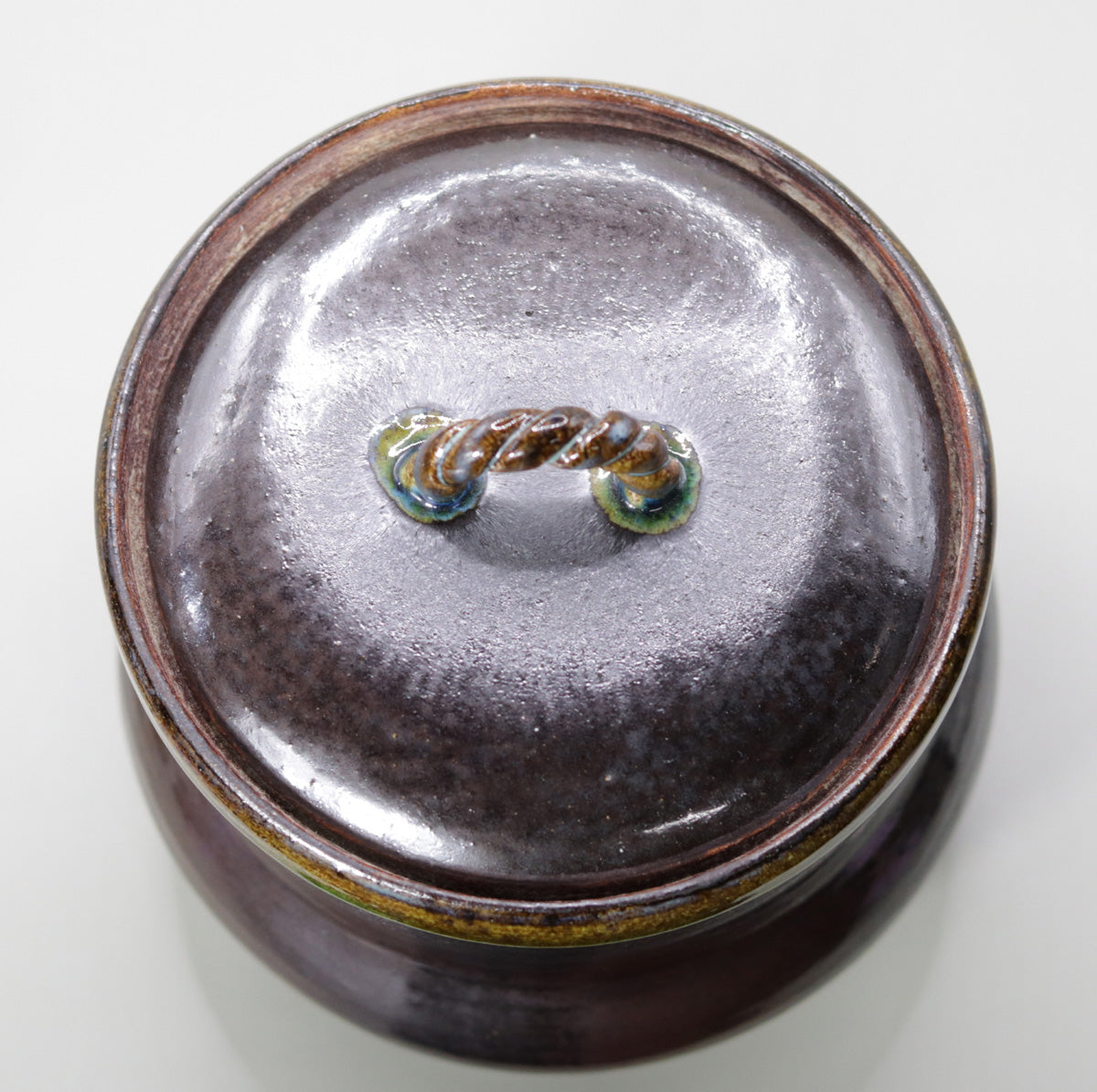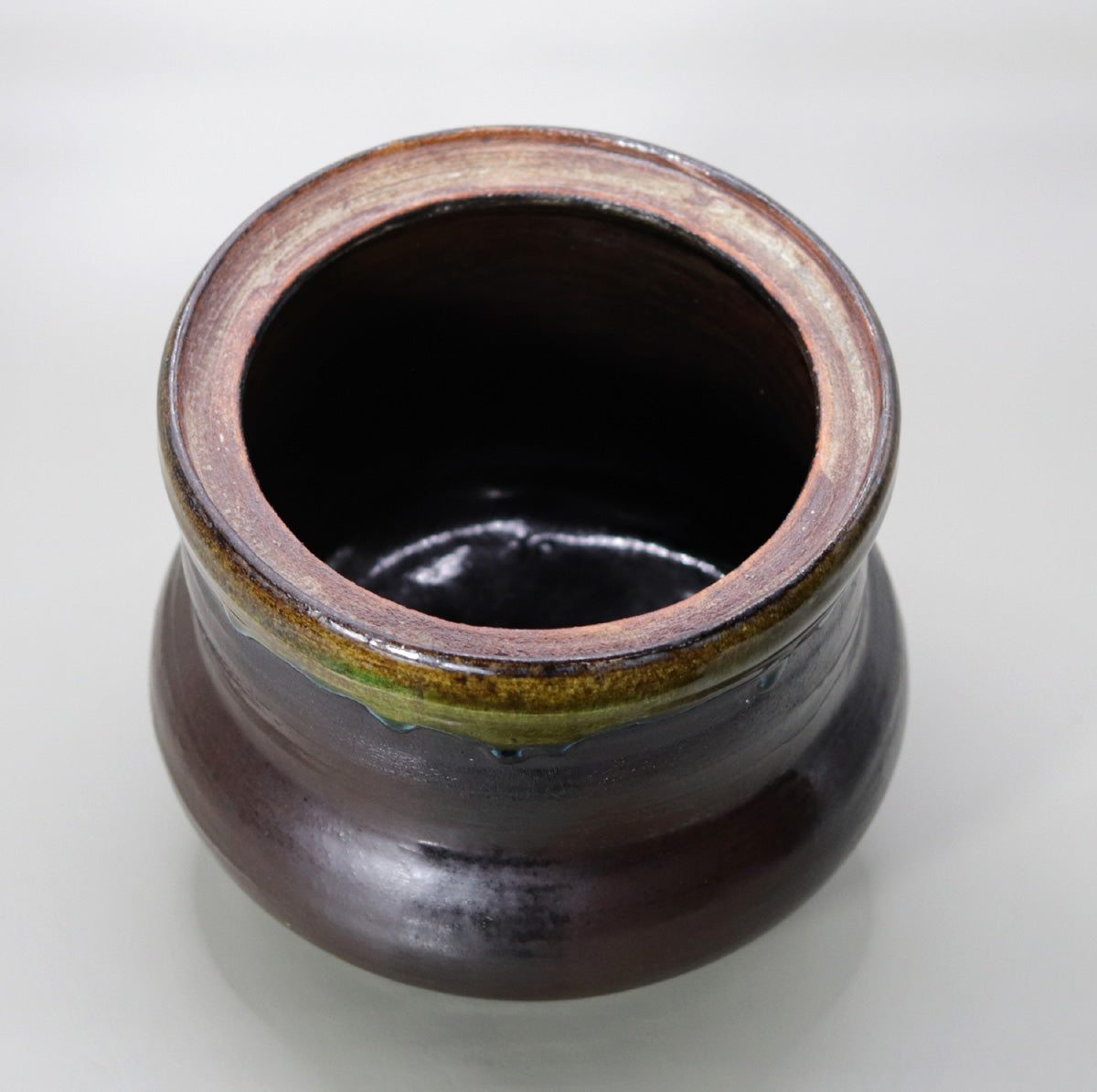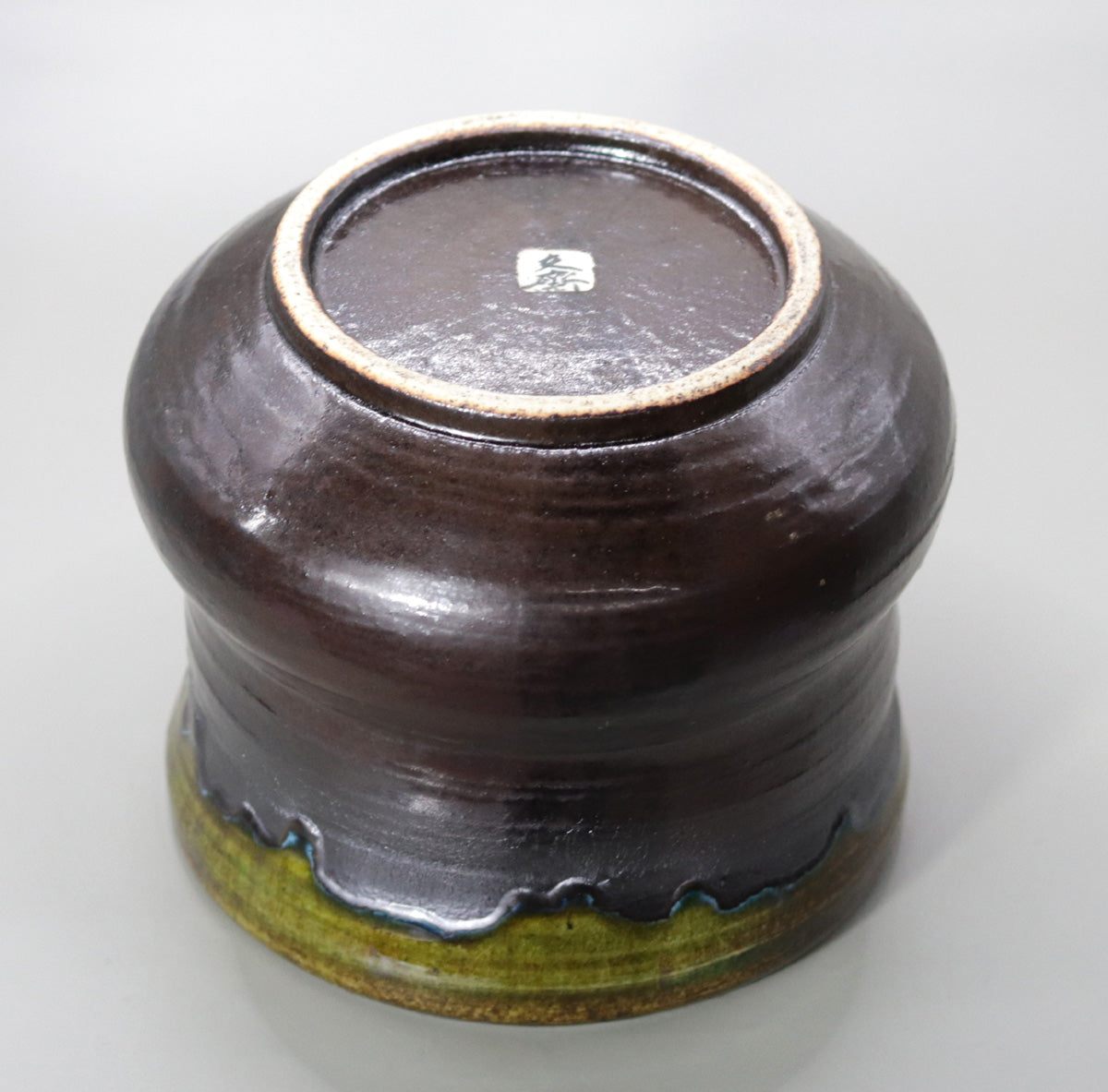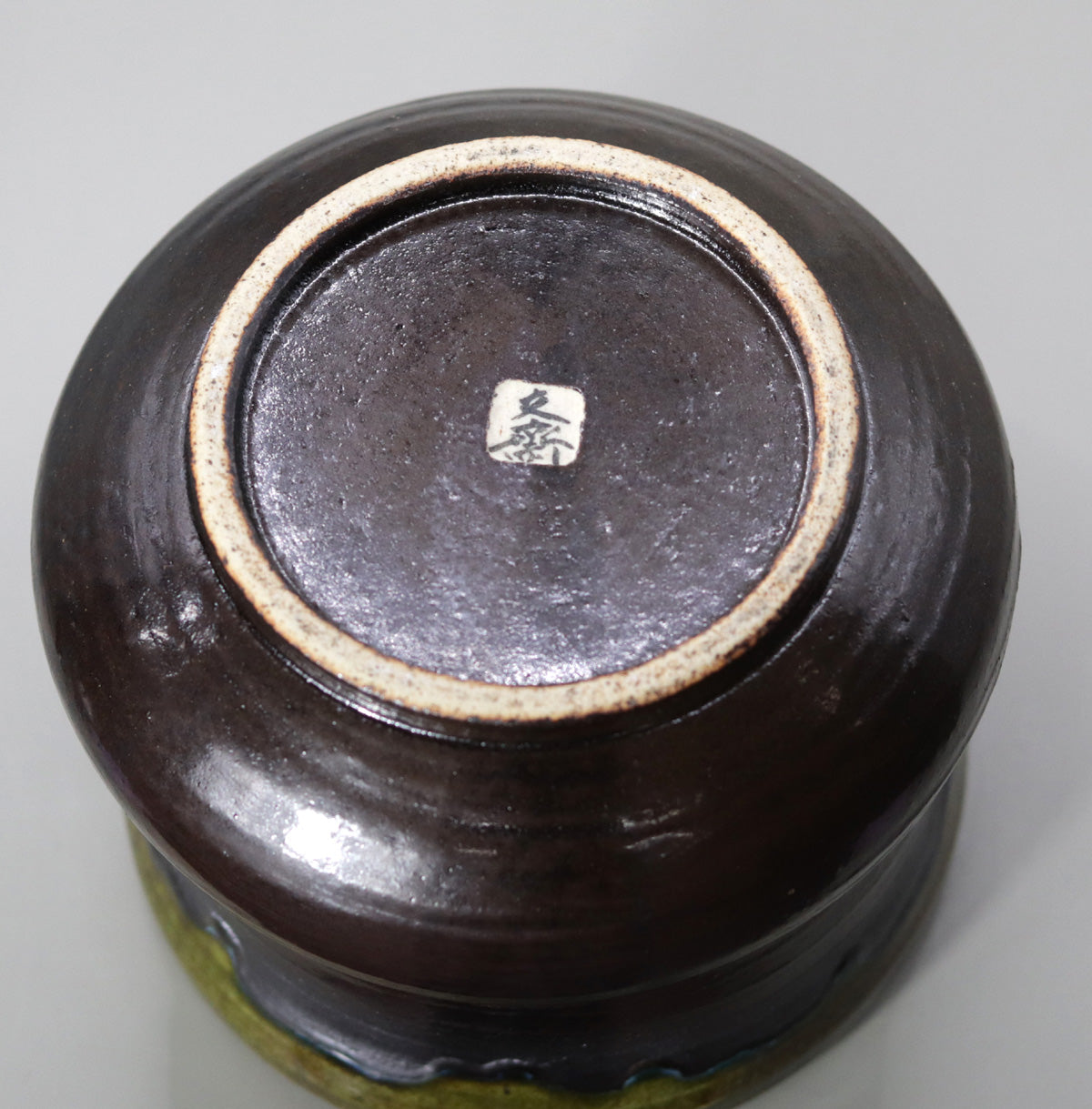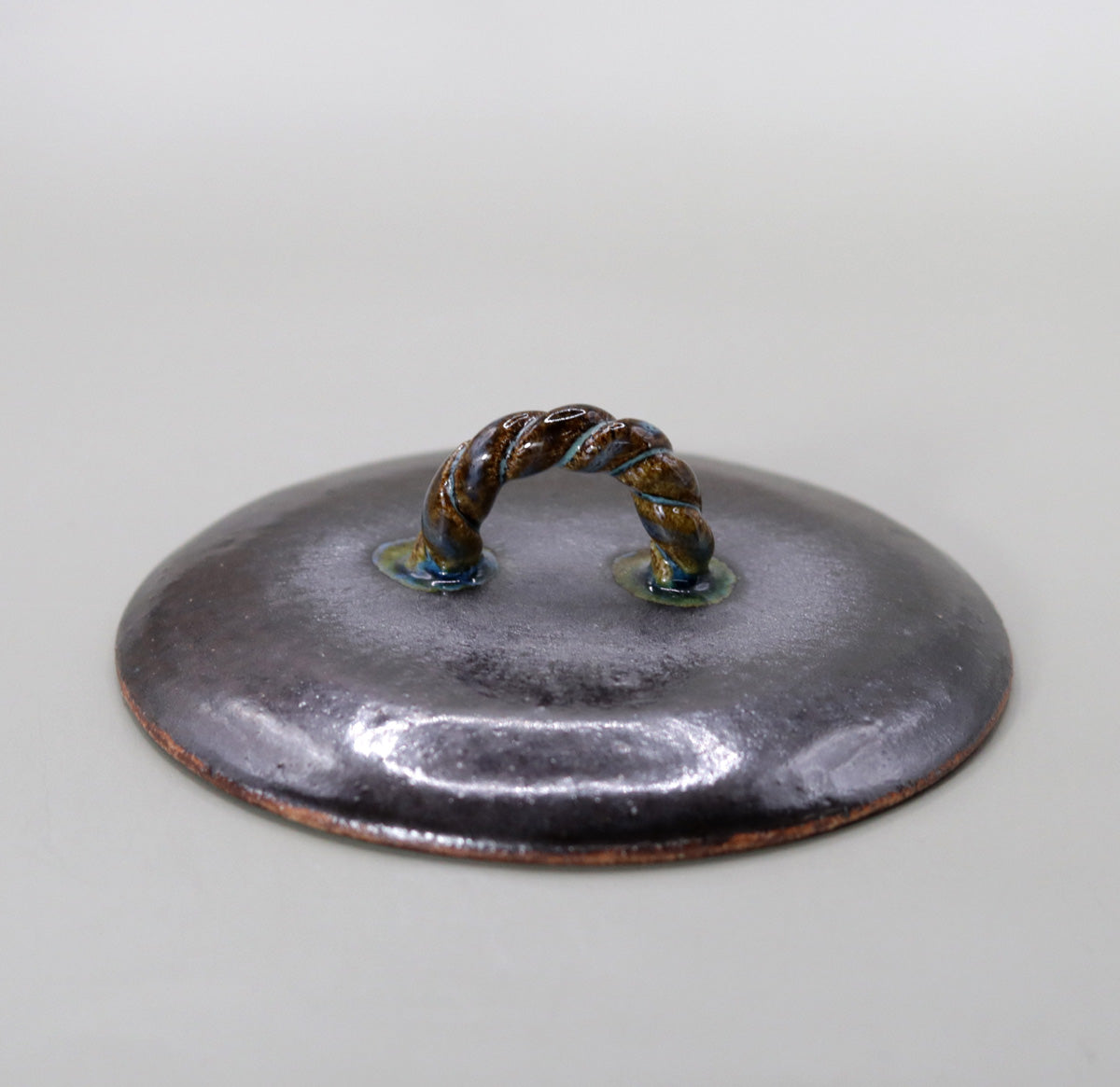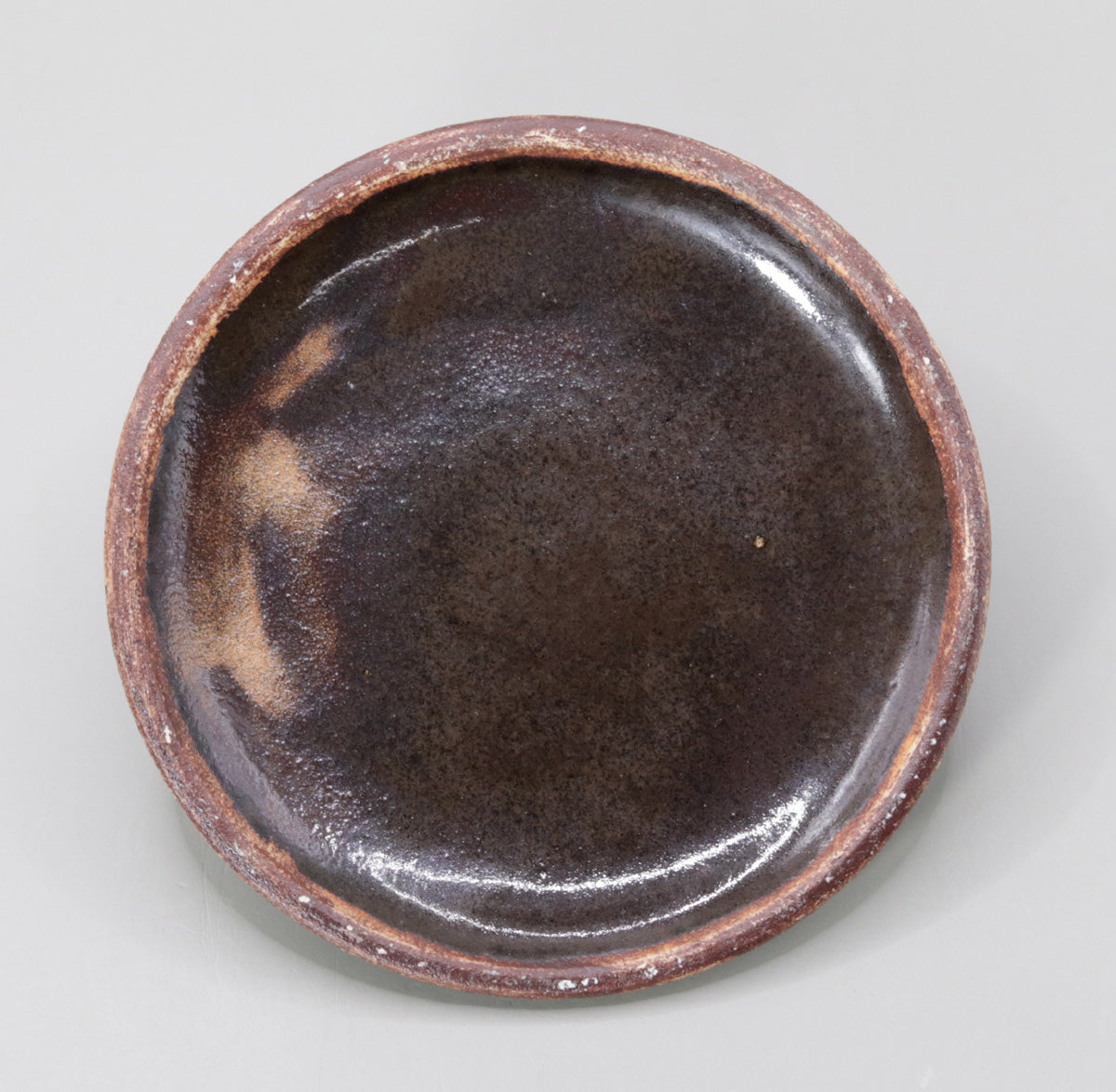Iron glazed water jar by Ogawa Bunsai
Iron glazed water jar by Ogawa Bunsai
Couldn't load pickup availability
Width: 17.0cm x 17.0cm Height: 17.0cm
Iron glazed water jar
-Written by Bunsai Ogawa (6th generation)
This "Iron Glazed Water Jar" is an elegant piece created by the sixth generation Ogawa Bunsai (Oki) that combines serenity and strength. The heavy luster of the iron glaze, combined with the slight seepage and flow of the green glaze, gives off the feeling of a spring hidden deep in the mountains. The rope handle on the lid goes beyond its practical use to be a sculptural accent reminiscent of ancient utensils, adding a unique shade and dignity to the space of the tea room.
Although lustrous, it never becomes gaudy, and its soft texture brings a sense of calm both visually and tactilely. The intermediate color between the black of the iron glaze and the brown appears naturally depending on the degree of firing, and in that uncertainty one can find the spirit of "once in a lifetime". The minute traces of the wheel marks on the surface also give a sense of the breathing of "human hands" rather than the uniformity of a machine, and the beauty of the form fully fulfills the purpose of a tea ceremony utensil.
Tableware that lives in the tea ceremony
The Mizujar is a symbol of "purification" in the tea ceremony. It is always positioned directly in front of the guest during the tea ceremony, and its appearance influences the impression of the entire space. The restrained appearance and rich glaze scenery of this piece are endowed with the dignity befitting its role, and it has the power to deliver a "clean spirit" to those who see it.
Of particular note is the use of the green glaze that melts softly around the edge of the lid. This color, which Bunsai VI has explored for many years, is not just for the sake of creating a beautiful effect, but is a color born from his spiritual perspective - that is, from the perspective of "wishing for peace and feeling the cycle of life." The way the green glaze blends with the dark brown iron glaze is a true collaboration of "yin and yang," "hard and soft."
The lineage and innovation of Bunsai kiln
The beauty of form and philosophy embodied in this vessel are based on the traditions of Bunsai Kiln, which has a history of over 150 years.
The first generation, Ogawa Bunsai (Bunsuke), was born in Kaga in 1809. He traveled to Kyushu and Arita, Hizen, and other areas to learn the techniques of kiln construction, aspiring to become a potter. He then opened a kiln in Kaseyama, Kyoto, and was recognized by the Ichijo family, who bestowed the character "sai" and their family crest, hence the name "Bunsai." In 1873, he moved the kiln to Gojozaka, Kyoto, and the techniques and spirit have been passed down for six generations since then.
The sixth generation, Bunsai Ogawa (Oki), studied sculpture at graduate school before embarking on a career in ceramics, winning numerous awards at the Nitten and Kyoten exhibitions and attracting attention for his works that combine modern sensibilities with traditional techniques. In recent years, he has become known as the "green man" and has been developing his creative activities to express prayers for peace, centering on the expression of emerald glazes.
A vessel of peace and beauty
As the 6th Bunsai said, "I want to put my wish for a world without conflict into the form of pottery."
This feeling is especially clear in a tranquil water jar like this one. The light spreading through the black, the accidental scenery created by the flow of glaze. These are never achieved artificially, but are the "miracle of pottery" born from the union of fire, earth, water, and the human hand and heart.
And it is the place where this miracle is received - the place where people meet face to face and exchange hearts. With this water jar there, the air becomes calm and time begins to flow more slowly. It is truly a "symbol" that, while being a vessel for practical use, also contains a deep spiritual meaning.
Iron-glazed water jar - a symbol of strength in silence.
And the crystallization of Bunsai Kiln embodies a wish for peace in a single drop of green.
A form of beauty and prayer that is needed in this modern age.
Please come and experience its presence in the tea room.
A conversation with Bunsai Ogawa – Pottery specialty store [Amagi-do]
Share
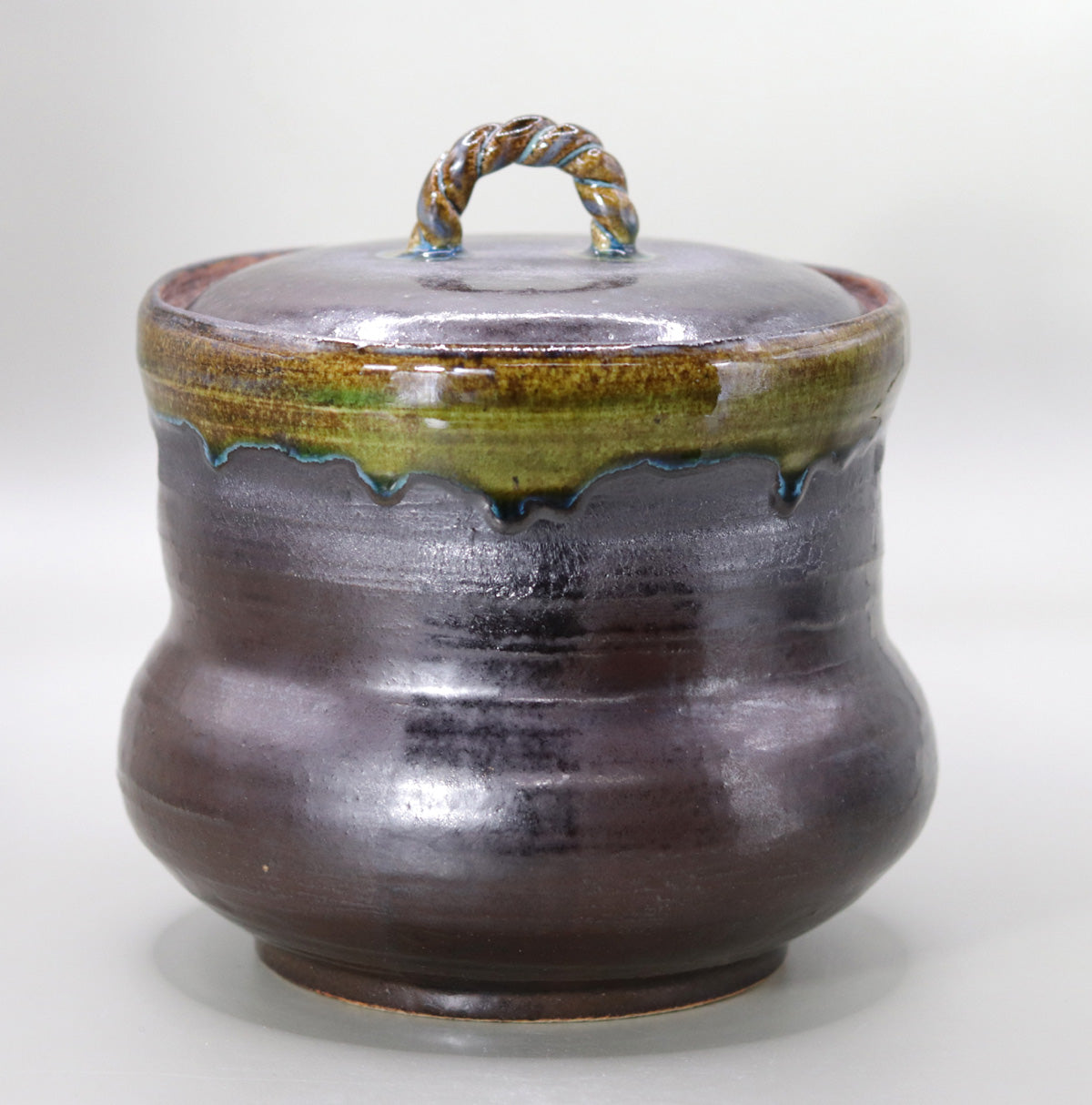
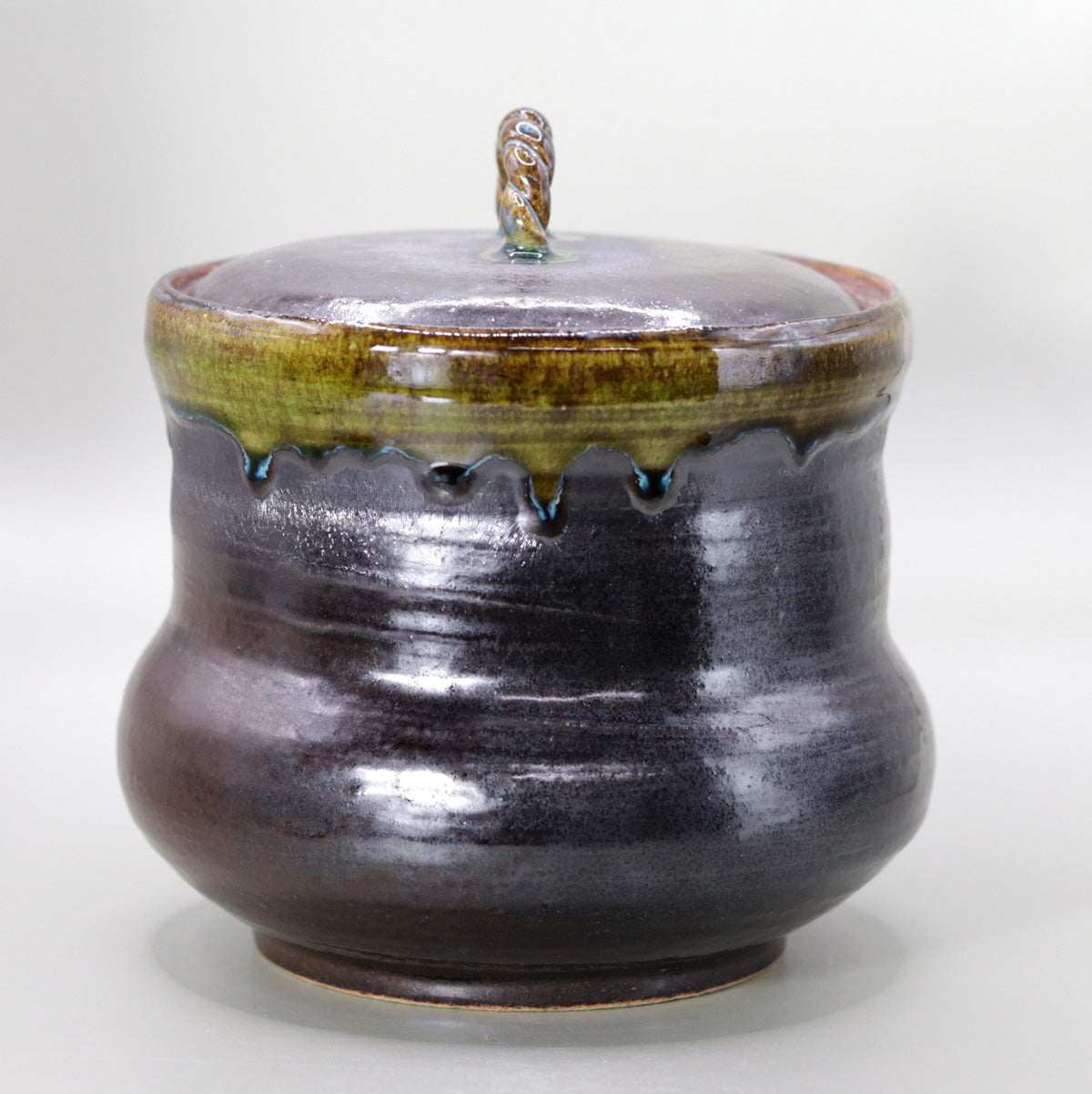
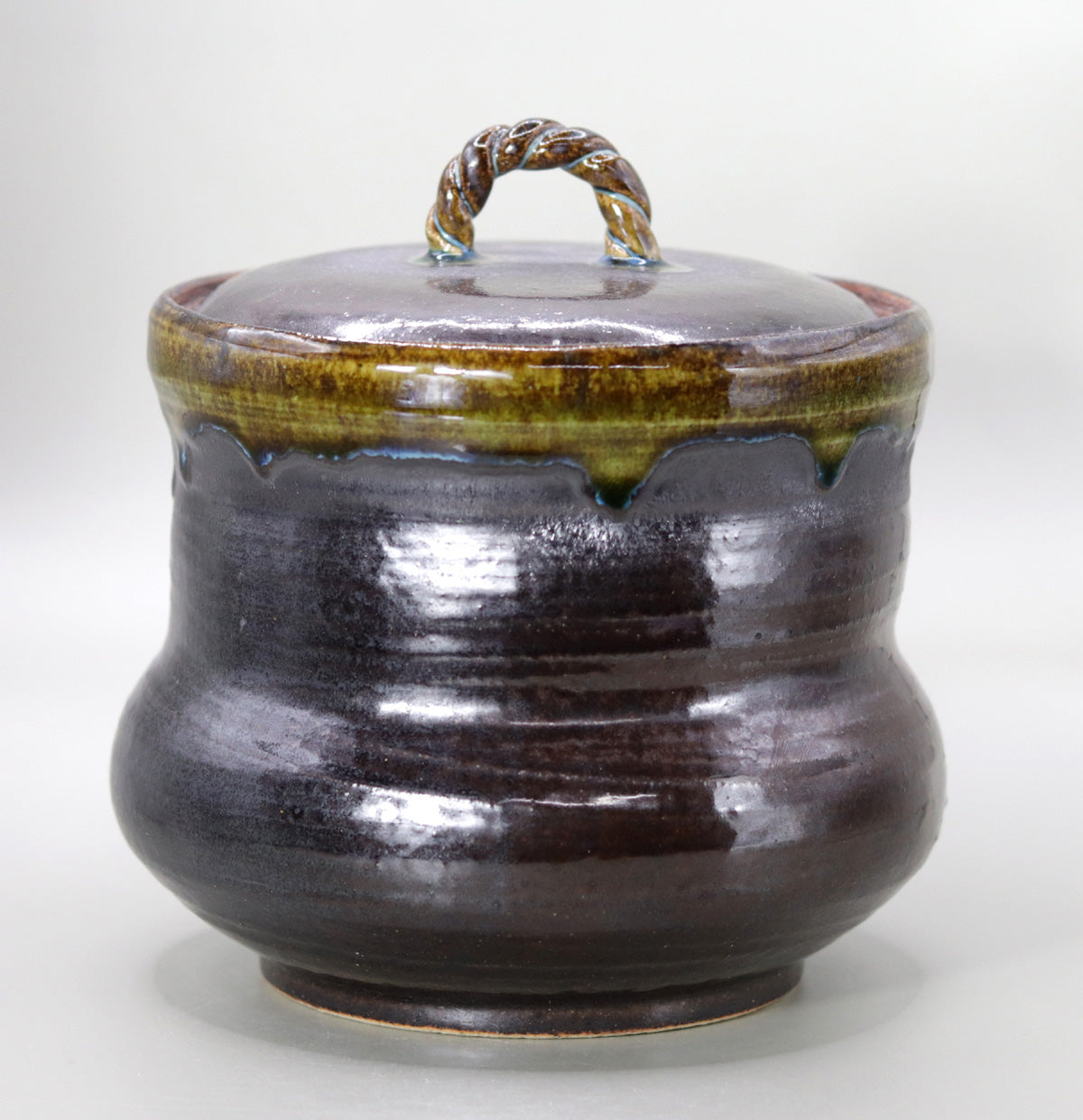
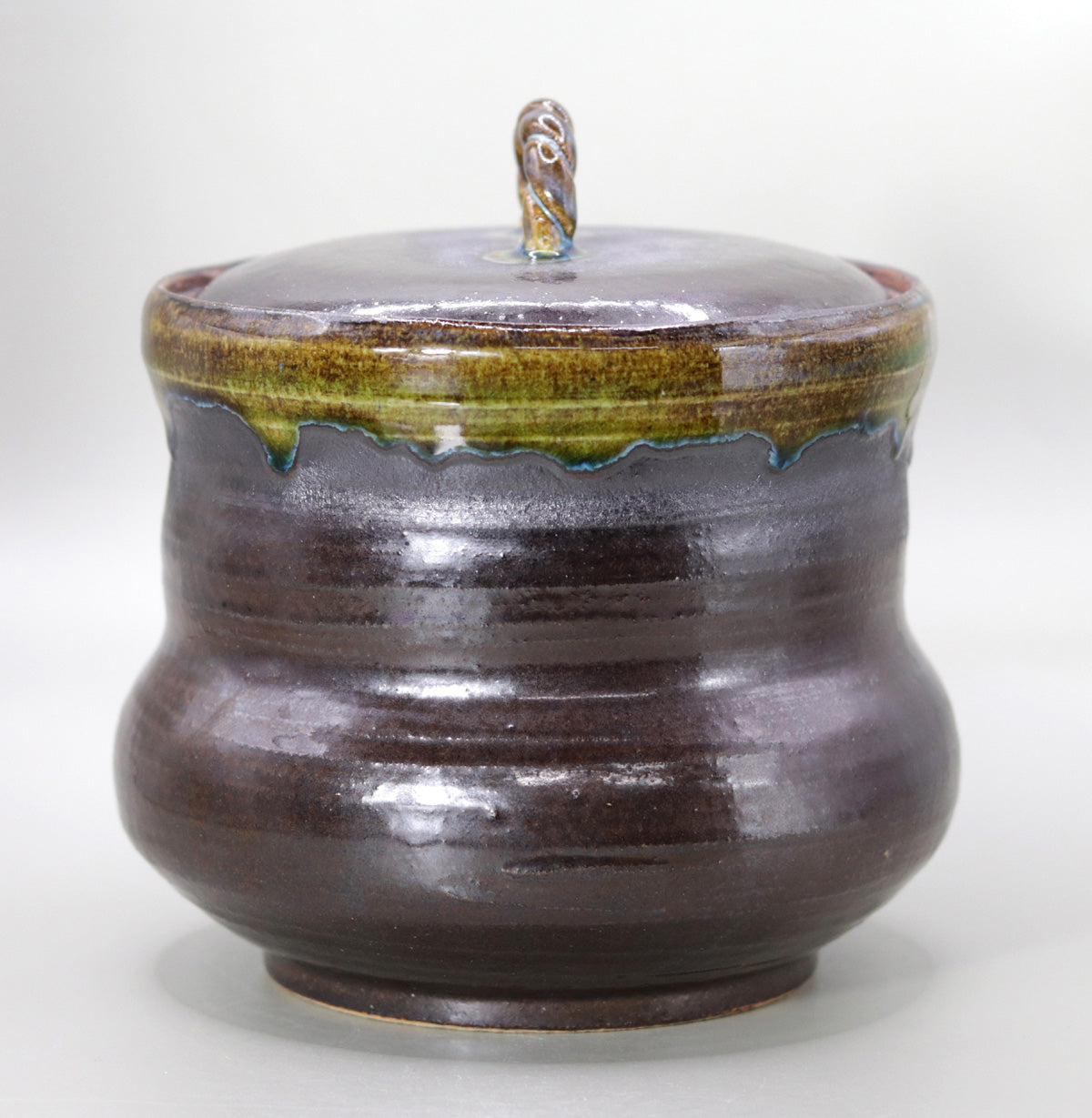
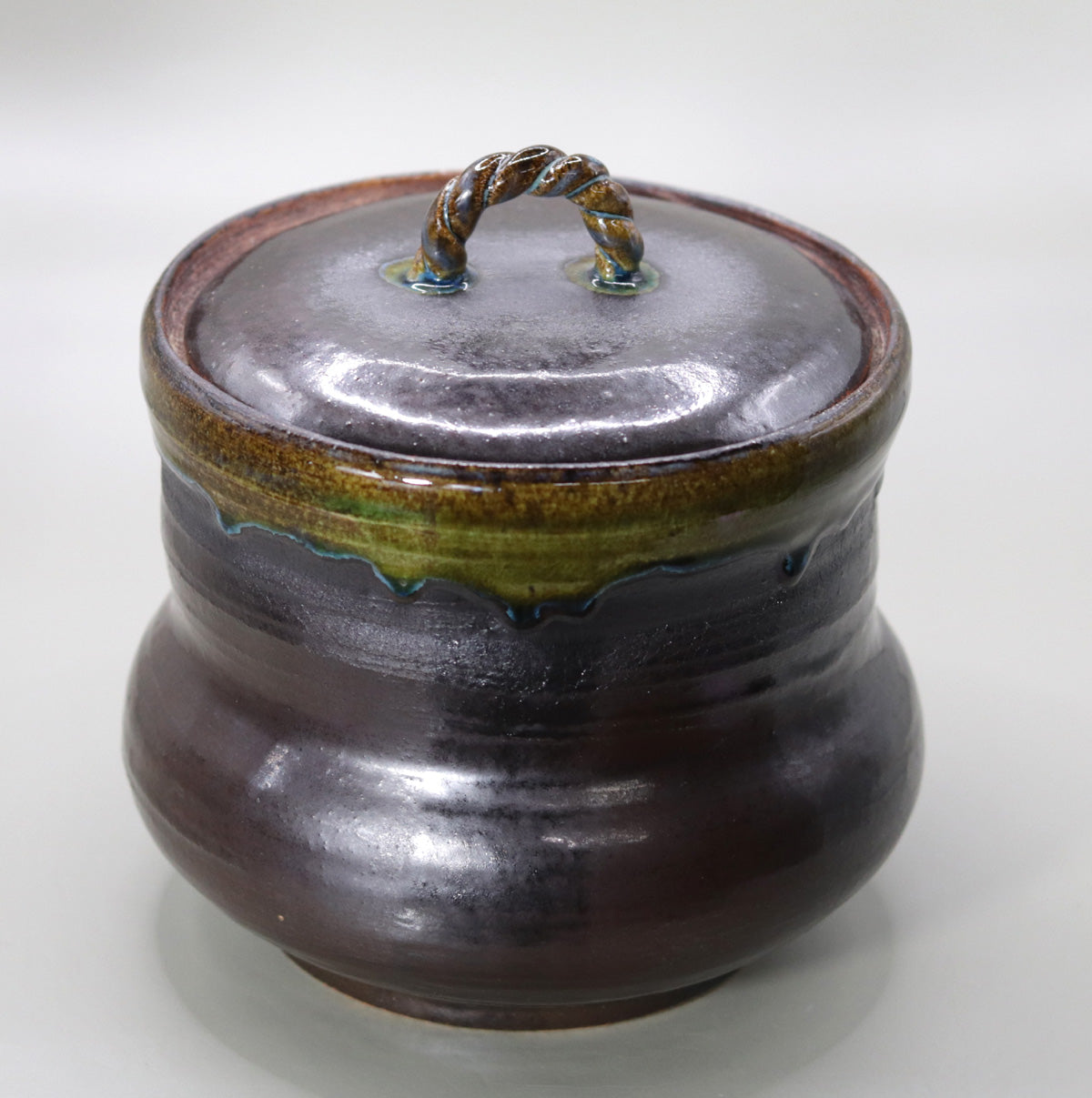
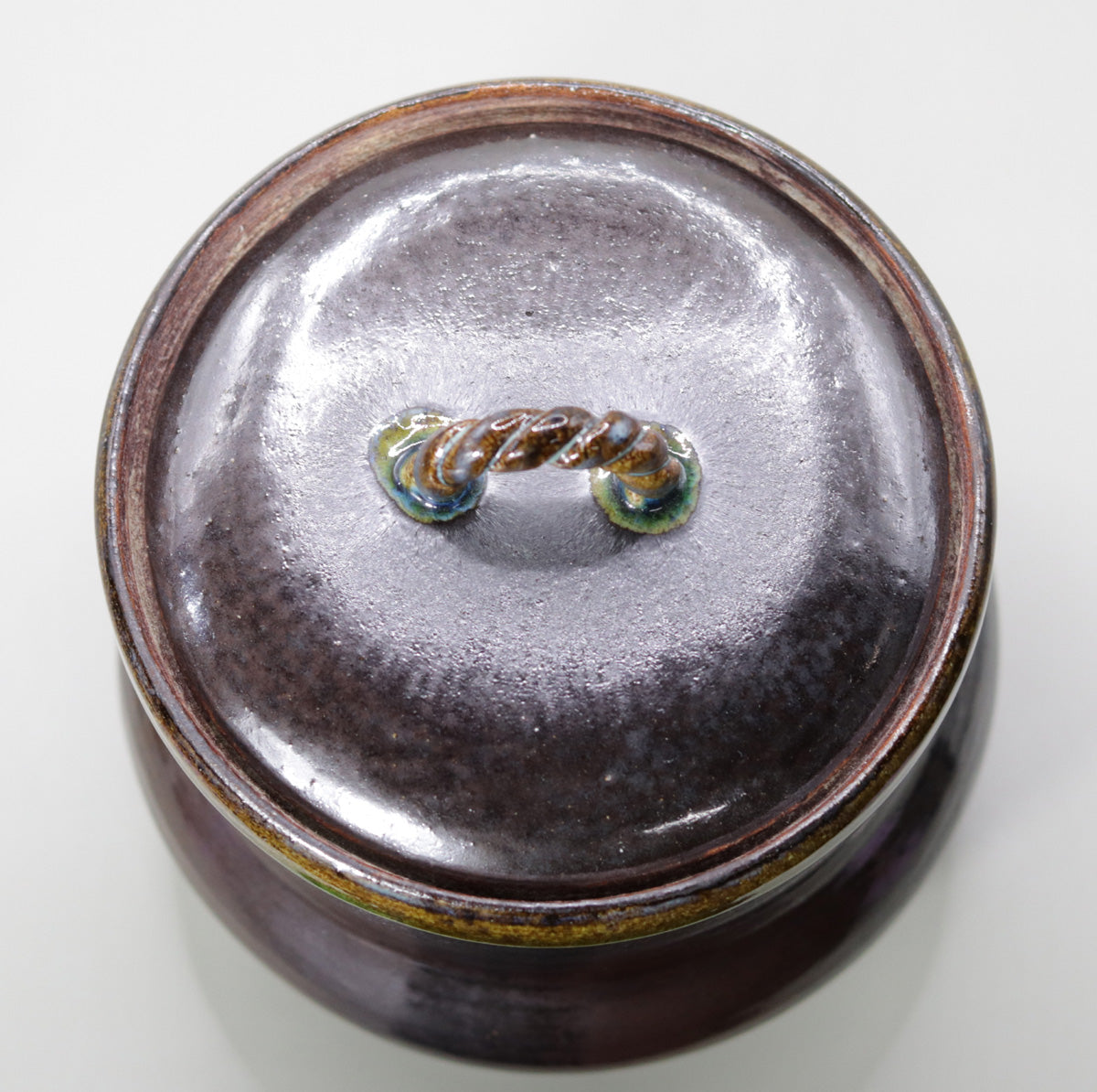
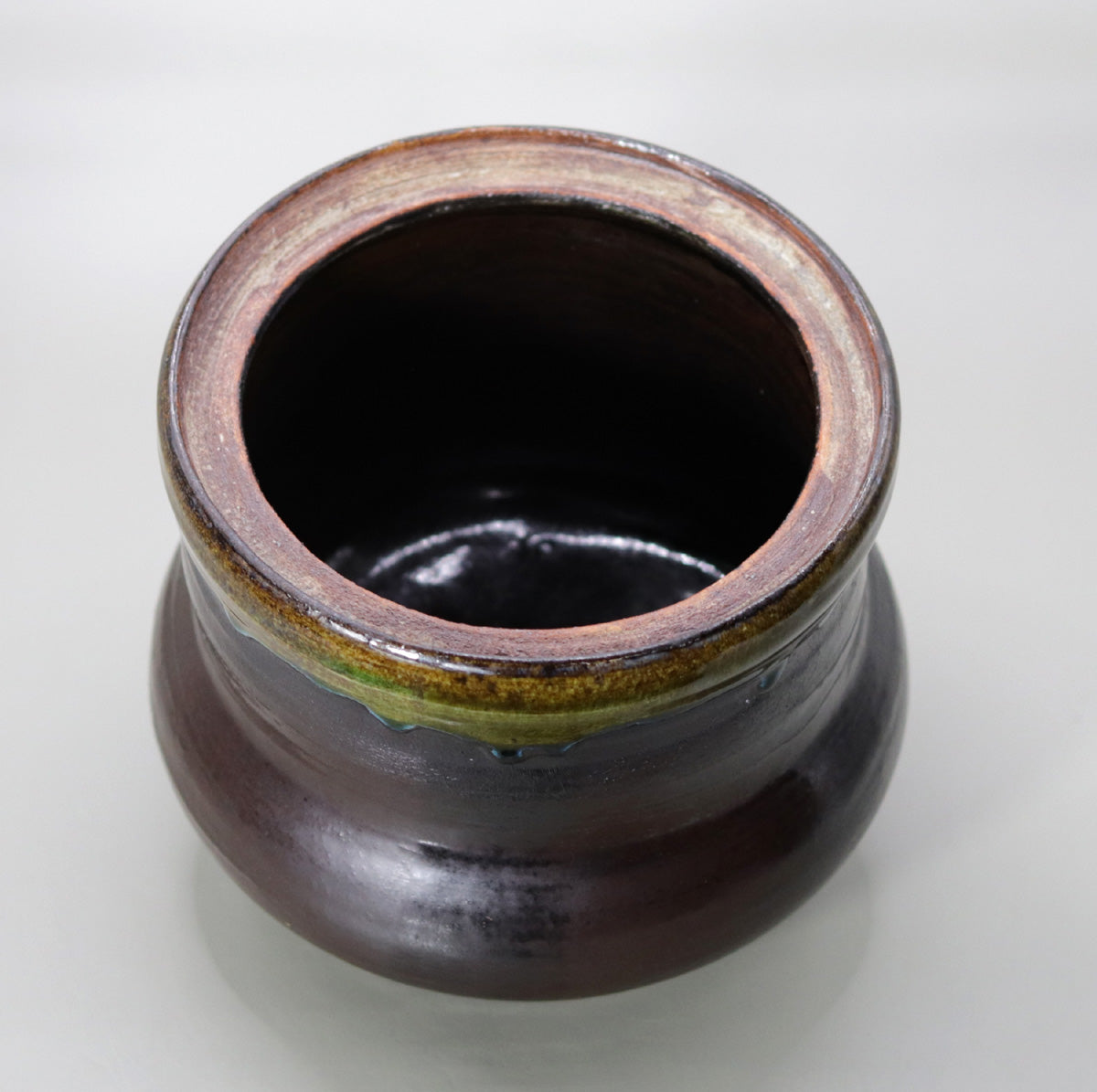
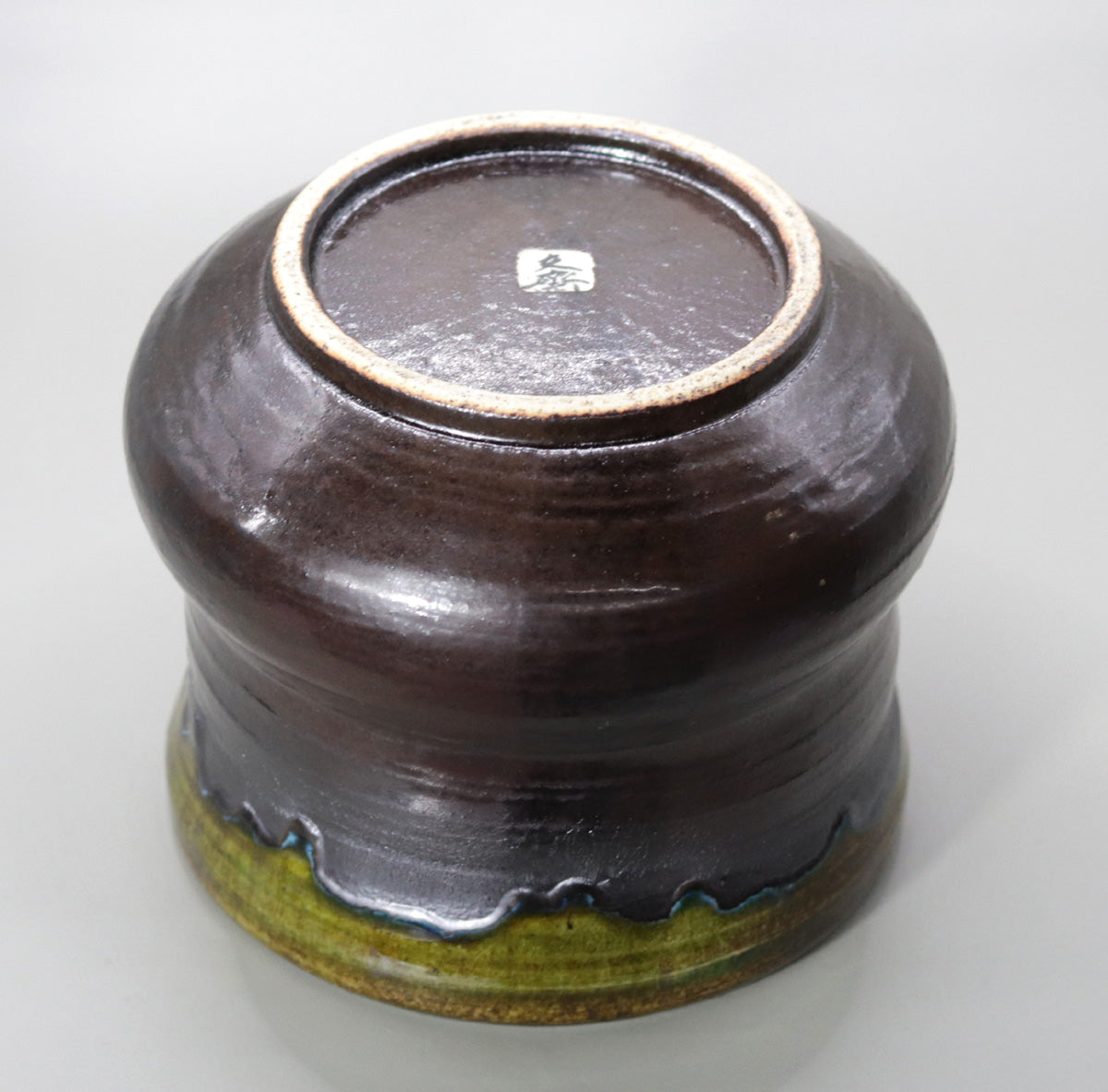
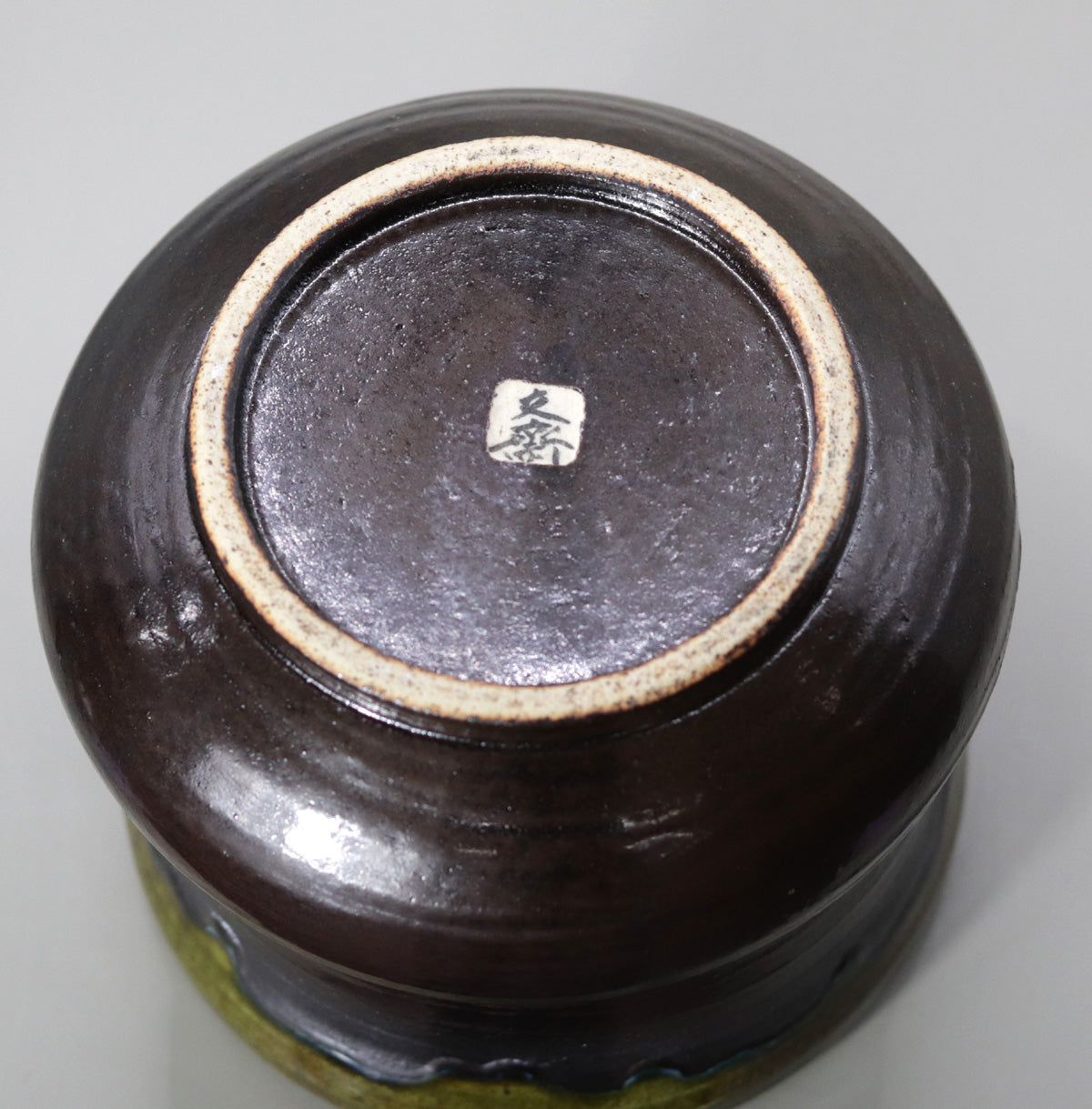
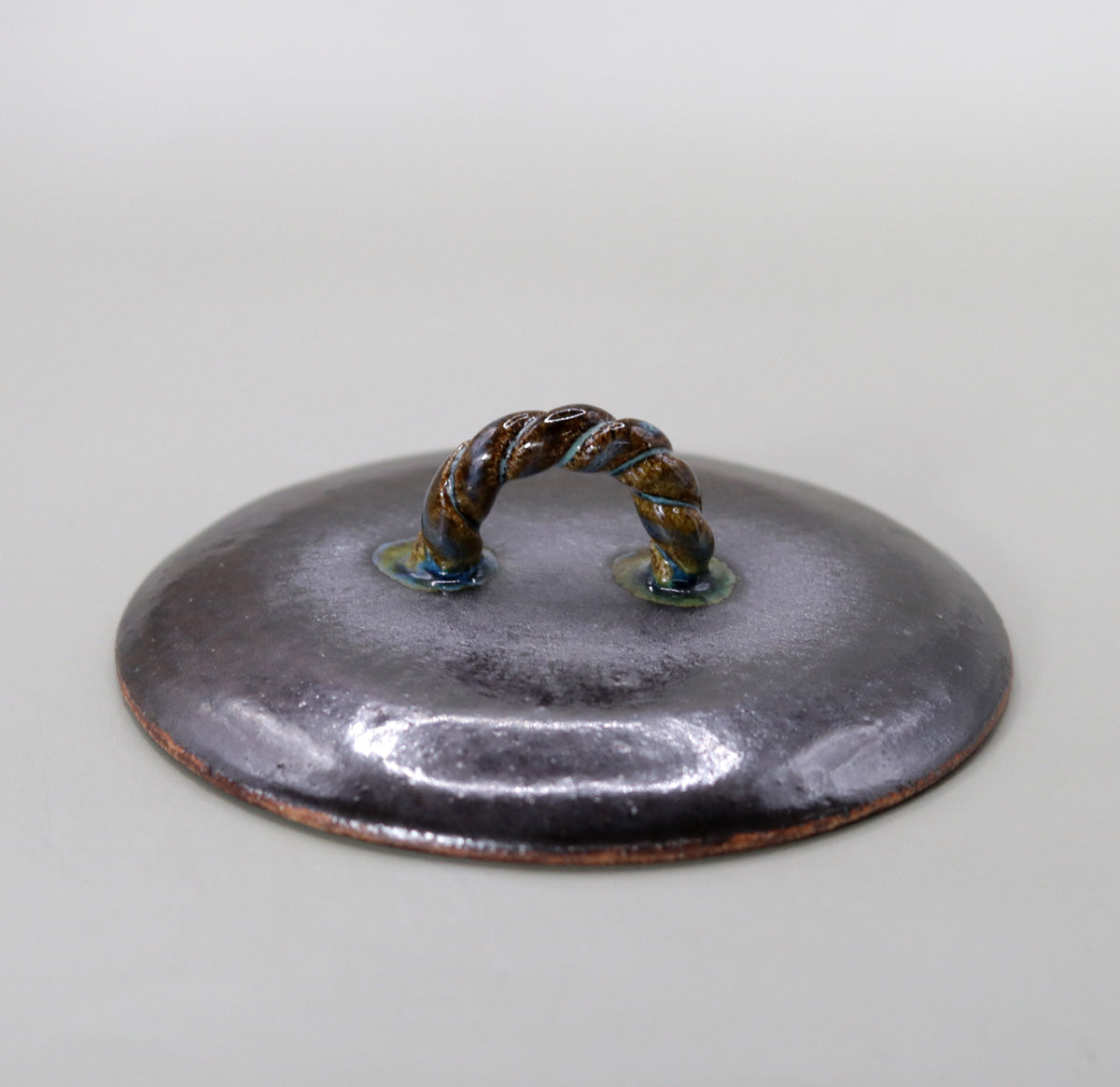
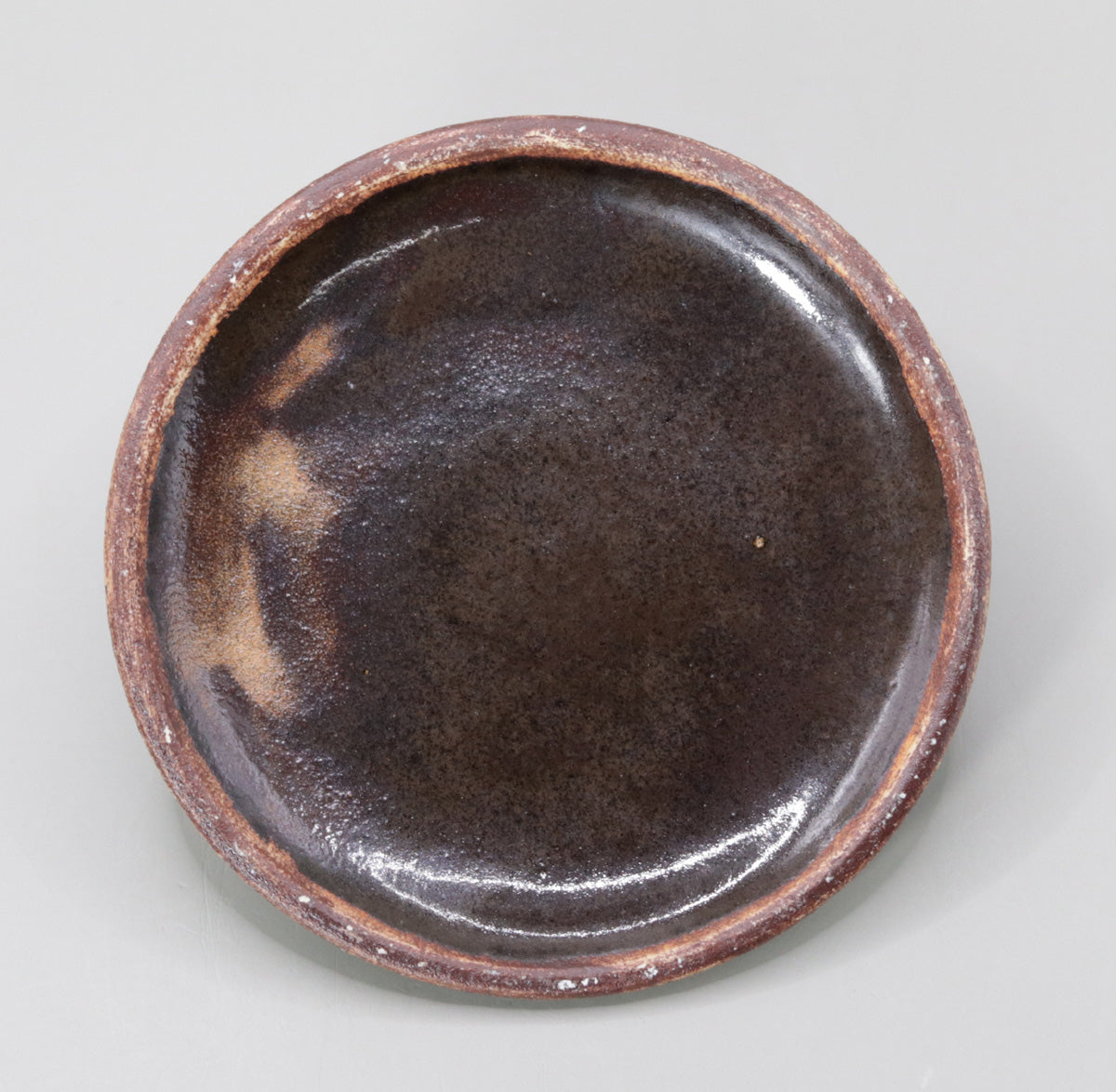
Multi-Column
-
[I will send it to you quickly and carefully]
We carefully package each product in a way that suits it best.
Also, delivery times vary depending on the piece (vessel, etc.).
Items that already come with a box will be shipped within 1-3 days of the order date.
For items that require a box to be made after your order, it will take approximately 30 days for production to be completed and then shipped.
In either case, once we have confirmed your order, we will contact you by email to inform you of the delivery date.
-
[Requests when purchasing pottery]
Even products that look the same may differ slightly in color, shape, size, etc.
The way the glaze is used, the power of the kiln, the firing method, the season, and the humidity also affect the appearance of the pottery.
Please understand the individuality of each piece of pottery and enjoy the unique warmth of handmade.

